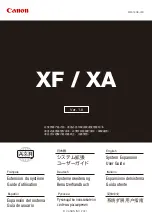
The Basics
Focusing
As with all astrophotography, sharp focus is essential for high quality results.
Although there are many techniques and devices for focusing your telescope,
the human eye still remains one of the best detectors in subtle changes in detail.
One advantage that video imaging has over imaging with more sophisticated
(and expensive) CCD cameras is the speed in which it can display its image.
Focusing NexImage is more similar to focusing a eyepiece than a CCD camera.
Unlike with long exposure cameras you don’t have to wait many seconds to see
the effect of a focus change.
Focusing Tips
To achieve best focus, concentrate on a high contrast feature of the object you
are imaging. Focusing on small features such as a moon’s shadow on Jupiter
or Cassini’s division in the ring of Saturn will guarantee best focus across the
entire image.
Once the frames of your video are stacked, the overall brightness of the composite
(stacked) image is usually brighter than its individual component frames. For this
reason it is best keep the brightness of the video image seen on the screen dimmer
than you would normally desire. It is important that no part of the image is over
exposed to assure the maximum amount of detail in the final composite image.
Collimation
No matter what type of telescope you image with, poor collimation (alignment
of the optics) will ruin your chances for a good image. Before you begin
imaging, always check the collimation of your instrument and make adjustments
if necessary. Refer to your telescopes owner’s manual for instruction in
collimating the optics.
Finding Objects
At first it can be difficult to locate individual planets due to their relative
brightness. To make it easier to initially find your object in the imaging window,
increase the brightness and gain controls under the Video Capture Filters menu.
This will allow you to better see the object as it passes through the imaging
window. Once the object is located and centered, you can adjust the setting
until the object is at the desired brightness and contrast.
11
Summary of Contents for NexImage
Page 14: ...13 User s Guide...













































